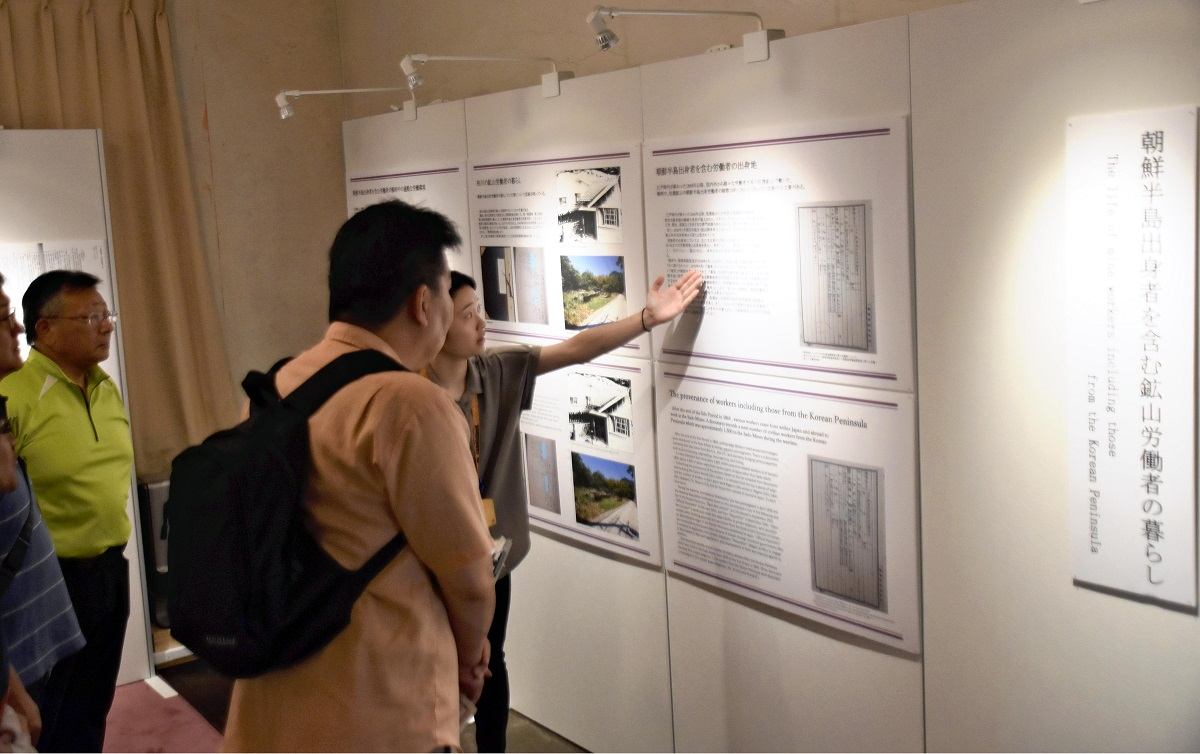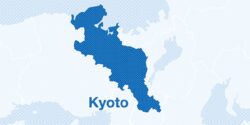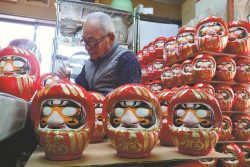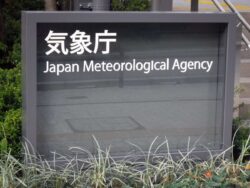Lives of Korean Peninsula Workers at Japan’s Sado Gold Mine in Japan Featured at Exhibition; Gold Mine Registered as UNESCO Heritage Site

Tourists visit an exhibition featuring Sado gold mine workers from the Korean Peninsula on Sunday in Sado, Niigata Prefecture.
13:35 JST, July 29, 2024
SADO, Niigata — A permanent exhibition displaying the harsh conditions of miners, including those from the Korean Peninsula, at the gold mining complex in Sado, Niigata Prefecture, opened Sunday.
The exhibition opened at the city’s Aikawa History Museum following the UNESCO World Heritage Committee’s decision on Saturday to register the gold mines on Sado Island to its World Heritage list.
The Japanese and South Korean governments made concessions for the registration, agreeing to omit terms related to “forced labor” at the exhibition but to include explanations about miners’ lives at the time.
About 1,500 people from the Korean Peninsula worked at the mines during World War II. The exhibition displays 29 panels with photos depicting dormitory life and working conditions. It also introduces records that show 80% of the rock drillers, a job considered to be dangerous, were from the peninsula at one time.
Visitors came to see the exhibition starting from the morning on opening day.
“I didn’t know people from the Korean Peninsula worked here,” said a 38-year-old office worker from Tokyo.
Museum director Tetsuo Ikeda said, “I hope the exhibition promotes understanding between Japan and Korea.”
"Society" POPULAR ARTICLE
-

M4.9 Earthquake Hits Tokyo, Neighboring Prefectures
-

Israeli Tourists Refused Accommodation at Hotel in Japan’s Nagano Pref., Prompting Protest by Israeli Embassy and Probe by Prefecture
-

M7.5 Earthquake Hits Northern Japan; Tsunami Waves Observed in Hokkaido, Aomori and Iwate Prefectures
-

Tsukiji Market Urges Tourists to Avoid Visiting in Year-End
-

High School in Kyoto Says Students Shoplifted during Recent School Trip to Bali, Indonesia
JN ACCESS RANKING
-

Tokyo Economic Security Forum to Hold Inaugural Meeting Amid Tense Global Environment
-

Keidanren Chairman Yoshinobu Tsutsui Visits Kashiwazaki-Kariwa Nuclear Power Plant; Inspects New Emergency Safety System
-

Imports of Rare Earths from China Facing Delays, May Be Caused by Deterioration of Japan-China Relations
-

University of Tokyo Professor Discusses Japanese Economic Security in Interview Ahead of Forum
-

Japan Pulls out of Vietnam Nuclear Project, Complicating Hanoi’s Power Plans























